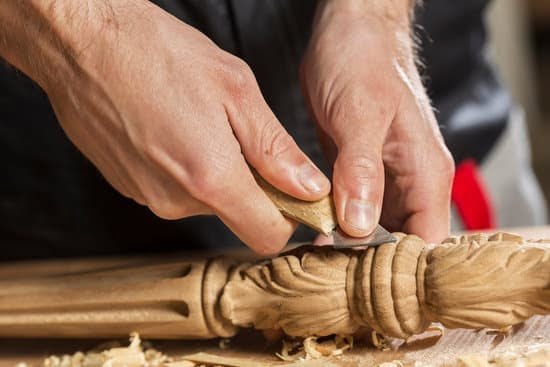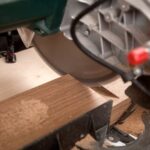Are you wondering how much it costs to make a woodworking bench? Woodworking benches are an essential piece of equipment for any woodworker, providing a sturdy and stable work surface for a variety of projects. Whether you are a seasoned professional or just starting out, having a quality woodworking bench is crucial for achieving accurate and precise results in your woodworking endeavors.
In this article, we will explore the various aspects of making a woodworking bench, including the different types available, the tools and materials needed, setting a budget, step-by-step instructions, factors impacting the cost, and comparing DIY options versus purchasing one ready-made. By the end of this article, you will have a comprehensive understanding of what it takes to build your own woodworking bench.
Understanding the importance of a woodworking bench is crucial for anyone looking to embark on this DIY project. A good quality woodworking bench provides stability and support for cutting, shaping, and assembling wood. It also offers various features to enhance productivity and safety in the workshop. Whether you are working with hand tools or power tools, having a well-made woodworking bench can make all the difference in the outcome of your projects.
Types of Woodworking Benches
When it comes to woodworking benches, there are different options available, each with its own unique features and advantages. One popular choice is the traditional European-style workbench, known for its sturdy construction and versatile clamping system. Another option is the cabinetmaker’s bench, which typically features a recessed tool tray and storage cabinets for easy access to tools and supplies. For those with limited space, a portable or fold-down workbench may be the best solution.
The traditional European-style workbench is often made of solid hardwood such as beech or maple, providing durability and stability for various woodworking projects. These benches typically feature a thick top with integrated vices for holding wood in place while sawing, planing, or chiseling.
On the other hand, cabinetmaker’s benches often have a thinner top to allow for more intricate woodworking tasks such as delicate joinery and carving. Additionally, they may include built-in vises and clamping systems for securing workpieces during detailed work.
When considering how much to make a woodworking bench, it’s essential to take into account the materials needed for the chosen bench style. The cost of hardwood lumber can vary significantly depending on the type of wood and its quality.
Additionally, if purchasing pre-made vises or other specialized hardware, this will contribute to the overall expense. However, by understanding the features of each type of bench and carefully planning out the required tools and materials, woodworkers can establish an accurate budget for their project.
| Item | Average Cost |
|---|---|
| Hardwood Lumber (per board foot) | $5 – $15 |
| Vise Hardware | $50 – $200 |
| Workbench Plans | $20 – $50 |
By researching these costs upfront and accounting for any additional tools or hardware required, individuals can effectively estimate how much it will cost them to make their desired woodworking bench.
Tools and Materials Needed
When it comes to making a woodworking bench, having the right tools and materials is essential for the success of the project. Before getting started, it’s important to have a comprehensive list of everything you’ll need in order to build a sturdy and functional bench that suits your woodworking needs.
The tools and materials needed for making a woodworking bench can vary depending on the specific design and size of the bench you plan to construct. However, there are some basic items that are typically required for most woodworking bench projects.
Some of these essential tools include a saw (such as a circular saw or hand saw), a drill with various drill bits, clamps, a tape measure, sandpaper or a sander, chisels, and a mallet. These tools will help you cut, drill, assemble, and finish your woodworking bench.
In addition to tools, you’ll also need an assortment of materials to build your woodworking bench. This may include wood for the bench top and legs (such as hardwood or softwood depending on your preference), screws or other fasteners for assembly, wood glue for added reinforcement, and finish such as varnish or paint to protect and enhance the appearance of your finished project.
Taking the time to gather all necessary tools and materials before beginning construction will make the process smoother and more efficient. Planning ahead in this way will also give you a better idea of how much to make a woodworking bench within your budget while still sourcing quality components for the project.
Setting a Budget
Research and Cost Estimation
Before starting your woodworking bench project, it’s important to do some research to get an idea of how much the materials and tools will cost. Online resources, hardware stores, and lumber yards are great places to gather information on prices for items such as wood, screws, wood glue, clamps, and finishing supplies.
By creating a comprehensive list of all the necessary materials and tools and estimating their costs, you can better understand how much you’ll need to budget for the project.
Consider Your Skill Level
Your skill level as a woodworker can also impact the overall cost of making a woodworking bench. If you’re a beginner or intermediate woodworker, you may need to invest in additional tools or seek professional assistance during certain steps of the project. On the other hand, if you’re an experienced woodworker with access to a wide range of tools and equipment, you may be able to save money by using what you already have.
Allow for Contingencies
When setting your budget for making a woodworking bench, it’s important to factor in some room for unexpected expenses or changes in plans. Whether it’s purchasing extra materials due to mistakes or opting for pricier options along the way, having some flexibility in your budget can help alleviate any financial stress that may arise during the project. By being prepared for potential contingencies, you can approach the process with peace of mind and confidence.
Step-by-Step Guide
Before embarking on the process of making a woodworking bench, it’s essential to understand the various steps involved in this project. Building a durable and functional workbench requires careful planning, precise measurements, and the right tools. Here is a detailed step-by-step guide that will help you create your own woodworking bench.
Step 1: Design Planning
The first step in making a woodworking bench is to determine the design and dimensions of the bench. Consider the type of woodworking projects you will be working on, as well as the available space in your workshop. Take into account the height, width, and depth of the bench to ensure it meets your specific needs.
Step 2: Gathering Materials and Tools
Once you have decided on the design, gather all the necessary materials and tools. You will need lumber for the top, legs, aprons, and stretchers, as well as screws or bolts for assembly. Additionally, ensure that you have essential woodworking tools such as a saw, drill, clamps, square, tape measure, and sander.
Step 3: Cutting and Assembly
Using your chosen design plan as a guide, begin cutting the lumber to size based on your measurements. Assemble the legs, aprons, and stretchers using screws or bolts to secure them in place. Ensure that everything is aligned properly before tightening all fasteners.
By following these detailed instructions combined with careful planning and attention to detail throughout the process, you can successfully create your very own woodworking bench at a fraction of the cost of purchasing one pre-made from a store or online retailer. Ultimately saving money while customizing your workbench exactly to your preferences.
Factors Impacting the Cost
When considering how much to make a woodworking bench, it’s essential to understand the various factors that can impact the overall cost of the project. By taking these variables into account, you can better prepare for the expenses involved in building a durable and functional woodworking bench.
1. Size and Design: The size and design of your woodworking bench will greatly influence the cost of materials. A larger bench will require more wood, hardware, and finishing products, while a more intricate design may call for specialized tools or additional time for assembly.
2. Quality of Materials: The type and quality of materials used will also play a significant role in determining the cost of the project. Opting for high-quality hardwoods, such as oak or maple, will result in a higher price tag compared to using softwoods like pine or plywood.
3. Tools and Equipment: If you don’t already own all the necessary tools for building a woodworking bench, you’ll need to factor in the cost of purchasing or renting them. This includes power tools like saws and drills, as well as hand tools such as chisels and clamps.
4. Finishing Touches: Depending on your preferences, adding finishing touches such as vices, storage drawers, or a custom finish can add to the total cost of making a woodworking bench.
By carefully considering these variables and creating a budget that accounts for each aspect of the project, you can get a clearer picture of how much it will cost to make your ideal woodworking bench. Whether you choose to splurge on high-quality materials or prioritize functionality over aesthetics, understanding these factors is essential for planning a successful woodworking project.
Comparing DIY vs Buying a Woodworking Bench
When it comes to deciding whether to build your own woodworking bench or purchase one, there are several factors to consider. One of the most important considerations is cost. Determining how much to make a woodworking bench can help you weigh the pros and cons of DIY versus buying. While building your own bench can offer customization and satisfaction of creating something yourself, buying a pre-made bench provides convenience and potentially saving time.
First, let’s consider the cost of building a woodworking bench. The total expense will depend on the type of materials used, the size of the bench, and any additional features or accessories included. On average, a DIY woodworking bench can cost anywhere from $100 to $500 for materials, depending on quality and size.
On the other hand, purchasing a pre-made woodworking bench can range from $200 to $2000 or more, depending on the brand, size, and features. While this may seem like a significant difference in cost compared to building your own, it’s essential to consider factors such as time investment, skill level required for construction, and long-term durability.
| Cost Consideration | Average Cost Range |
|---|---|
| DIY Woodworking Bench Materials | $100 – $500 |
| Purchasing Pre-Made Woodworking Bench | $200 – $2000+ |
Conclusion
In conclusion, the decision to make a woodworking bench can be a rewarding and cost-effective endeavor for those with the time, skills, and resources. By following the step-by-step guide and carefully considering the tools and materials needed, individuals can create a custom bench that meets their specific woodworking needs. Additionally, setting a budget beforehand and understanding the factors that can impact costs will help ensure that the project remains within financial reach.
The flexibility of DIY woodworking allows for personalization and customization that may not be available with store-bought options. However, it’s important to weigh the pros and cons of building your own bench versus purchasing one to determine which option best suits your individual circumstances. Whether for hobbyists or professionals, having a dependable and sturdy woodworking bench is essential for any workshop.
Ultimately, regardless of whether you choose to make your own woodworking bench or purchase one, it’s important to recognize the value it brings to your craft. With proper planning, consideration of costs, and dedication to the project at hand, creating a functional and durable woodworking bench can be a fulfilling experience. No matter the choice made in the end, having a reliable workspace where creativity flourishes is truly priceless.
Frequently Asked Questions
Is It Cheaper to Build a Workbench or Buy One?
Building a workbench can be cheaper than buying one, especially if you already have some of the materials needed. However, it may also depend on the quality and size of the bench you’re looking for.
What Is a Good Size for a Woodworking Bench?
A good size for a woodworking bench is typically around 3 to 4 feet deep and 6 to 8 feet long. This provides enough space for most projects while still being manageable in a smaller workshop.
What Is the Best Wood for a Woodworking Bench?
The best wood for a woodworking bench is often considered to be hard maple or beech. These woods are durable, heavy, and resistant to wear, making them ideal for withstanding the rigors of woodworking activities.

Hi everyone! I’m a woodworker and blogger, and this is my woodworking blog. In my blog, I share tips and tricks for woodworkers of all skill levels, as well as project ideas that you can try yourself.





